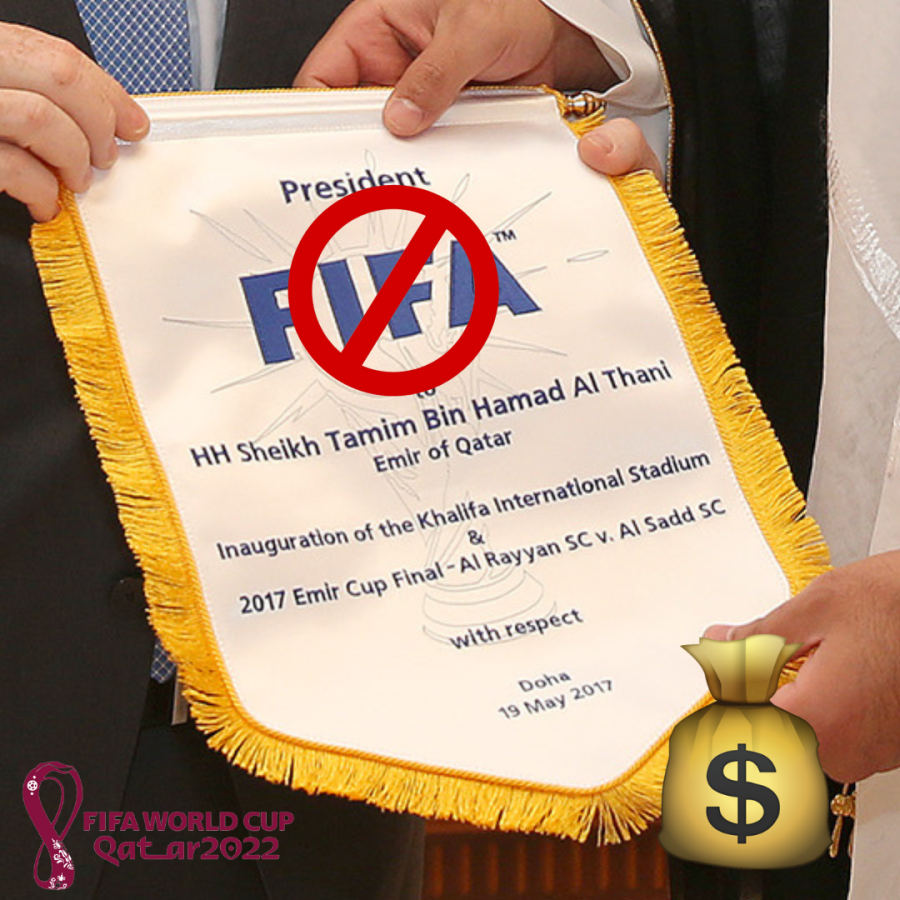World Cup Controversy Persists Long After Last Whistle
January 10, 2023
The 2022 Qatar World Cup is over, but there are still a lot of people who don’t know about it. Why was it in Qatar? Why was it in the winter? Why were there so many different rules? Who was harmed by it?
The opportunity to host
To see how Qatar got the opportunity to host the World Cup, we have to go back to 2009, when the talks and voting for the 2018 and 2022 World Cups were happening simultaneously.
To determine who hosts the World Cup, countries must first put in a bid to host. Then the FIFA Congress votes which country gets to host. The reason that voting is so far in advance is because it takes time to build the structures needed to host, such as stadiums, hotels, restaurants, etc. In order to host, the country must receive at least 50 percent of the votes in the FIFA Congress.
Heat in Qatar
When Qatar first bid for the World Cup, there were concerns. First, since the World Cup is usually played in the summer, issues with heat were a major concern. Summer temperatures in Qatar average over 100 degrees. However, in 2009, Sheikh Mohammed bin Hamad bin Khalifa al-Thani, the 2022 Qatar bid chairman, had this to say about the extreme temperatures, according to The Qatar Tribune:
“The event has to be organized in June or July. We will have to take the help of technology to counter the harsh weather. We have already set in motion the process. A stadium with controlled temperature is the answer to the problem. We have other plans up our sleeves as well.”
They weren’t able to build stadiums that lowered the temperature on the field, so FIFA agreed to have it in the wintertime. This caused some ruckus because the club seasons are in the winter, but the clubs agreed to pause their seasons for the duration of the World Cup.
Cost for the world’s biggest tournament
It costs a lot to host the World Cup. Qatar only had one stadium, so they built seven more and made many renovations to their home stadium. Along with the cost to build hotels, restaurants, etc., the cost to host came to about $11.2 billion. Having eight stadiums is unnecessary in a country the size of Qatar. So after the World Cup concludes, they plan to take 20,000 seats from seven of the stadiums and donate them to developing countries that don’t have strong support from their government.
How did eight stadiums get built? They were built by migrant workers who were brought in from all over the world. However, they were not treated well. Pay slips indicate that workers for almost 30 days were getting paid as low as $5.22 USD per day, according to The Guardian. They also endured poor working conditions. According to FastCompany, workers were subjected to overcrowded group dorms, long hours, abuse, dehydration, and delayed or unpaid wages. There have been a reported 450 deaths while building stadiums, from workers falling, or being hit by falling debris, collapsing from the heat, and infections.
Laws and regulations
Qatar is a Muslim country and therefore has very strict rules. It was a culture shock to fans because of how different their laws were. For example, any LGTBQ+ activity, including rainbow flags, were illegal. In fact, many uniforms and armbands had to be altered days before the tournament because they violated certain laws. In addition, the consumption of pork, bringing in any other religious scriptures, and public displays of affection were prohibited.
It was more extreme for women. Women in Qatar aren’t allowed outside without a father, spouse, or male relative present. They can’t get married or study abroad without a father’s permission, and they can’t work in many government jobs. It is frowned upon for women not to wear hijabs, clothing that covers their head and face.
Alcohol is very frowned upon in Qatar. It is offensive to be visibly intoxicated in a public setting. This was taken to a new extreme when just hours before the first match was to start, Qatar banned all selling and distribution of beer. Budweiser, the main beer sponsor for the World Cup, lost $47 million dollars after Qatar banned beer sales and is fighting for a refund, according to Front Office Sports.
Aftermath
Now that the event is over, people are going to take a look at this World Cup to see if it was a success or not. From a business standpoint, it was. This was the most profitable World Cup in the history of the event, per Al Jazeera. But from the fans’ point of view, it’s debatable. While it brought a lot of attention to the small country, some people didn’t like how it was run, along with the many laws regarding freedom of speech.
The 2026 World Cup will be in North America, with 48 teams and the games taking place in 16 cities across Mexico, Canada, and the United States.


